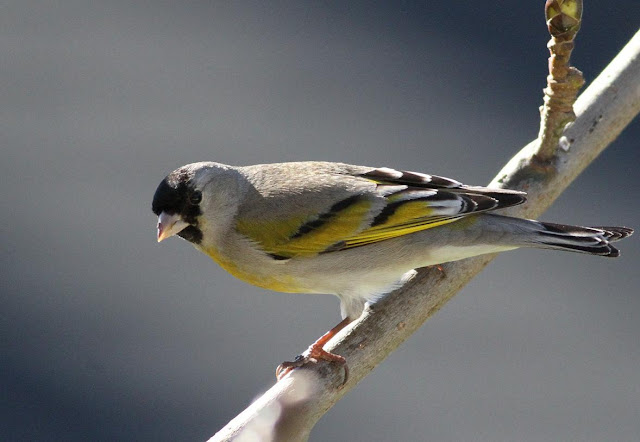On the San Diego Region Birding website, there
was a recent post that a few White Pelicans had been spotted at Batiquitos
Lagoon. To celebrate their return to our area, here are some photos of them from
the eastern trail at Rios Ave of San Elijo Lagoon taken in March of
2014.
Originally published in March of 2014.
Originally published in March of 2014.
The American White Pelicans do not dive after fish as the brown pelicans do. They are usually found in lagoons,
basins, and lakes where they can herd the schools of fish and scoop them up with
their beaks that act like giant fish nets. (Referenced from The Cornell Lab of Ornithology )
They will work in groups swimming and herding the fish into a
tight circle and then all at once all of them will dip their heads like a big shovel with their beaks open and
scoop up the fish.
Bringing up a beak full of fish. The lower bill with the large pouch is so sensitive that these pelicans can fish by feel on dark nights. (Info from The Sibley Guide to Bird Life and Behavior, 2001).
They look like choreographed water swimmers as all of the birds
move as one body to secure the school of fish that they have corralled.
They are amazing birds and a treat to be able to watch
them working together as they swim in the shallows feeding on fish.
When they are swimming... the black feathers of the wings are
usually not visible. Notice how they lift their wings up as they dive their heads underwater.
American White Pelican, Pelecanus
erythrorhynchos measures 62 inches long with a wingspan of 108 inches. The pelican pictured on the far right with pale beak may be a juvenile. He appears to be watching the fishing technique and learning how to fish cooperatively.
Sometimes they may dive forward getting upended just like dabbling
ducks.
These two are in full breeding plumage. Males and females look alike. Notice the fibrous epidermal plate on top of their bill. It is located near the tip and grows in breeding season but is much smaller and barely visible at other times. It is believed to be important in displays at courtship time.
A good look at the difference in size between a duck seen at far left of this photo compared to the very large
Pelicans.
Walking up to soak in the sunlight and do a little
preening.
As one turns and starts to walk back to the water, the rest
of the flock follows.
Now they are all back in the water. You can see the black
plumage on the primaries of the wings when they raise their wings preparing to dive forward.

































































